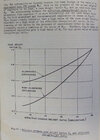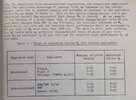As you al know British bombs (and also other nations) had different kind of HE fillings.
Looking for the relative effectiveness of the same bomb with different fillings mostly the TNT-equivalent is used.
I use the following numbers:
TNT = 100% (1)
Amatol 80/20 = 110 % (1.1)
Amatol 60/40 = 91 % (0.91)
Amatol 50/50 = 97 % (0.97)
Pentolite D1 = 133 % (1.33)
RDX/TNT 60/40 = ?
Minol 2 = 120 % (1.2)
I know there is a lot of discussion about TNT-equivalent, but there must be a rule of thumb to compare the effect of the same bombs with a different filling.
Can someone confirm this and/or has additions?
Greetings - Antoon
Looking for the relative effectiveness of the same bomb with different fillings mostly the TNT-equivalent is used.
I use the following numbers:
TNT = 100% (1)
Amatol 80/20 = 110 % (1.1)
Amatol 60/40 = 91 % (0.91)
Amatol 50/50 = 97 % (0.97)
Pentolite D1 = 133 % (1.33)
RDX/TNT 60/40 = ?
Minol 2 = 120 % (1.2)
I know there is a lot of discussion about TNT-equivalent, but there must be a rule of thumb to compare the effect of the same bombs with a different filling.
Can someone confirm this and/or has additions?
Greetings - Antoon



